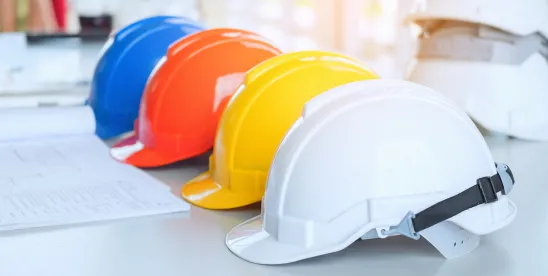In an earlier post, we covered the local Shelter-in-Place (“SIP”) orders, which severely restricted construction activities throughout the Bay Area. This week the participating jurisdictions (Alameda, Contra Costa, Marin, San Francisco, San Mateo, and Santa Clara Counties) updated their SIP orders to ease restrictions on construction. The changes take effect May 4 and will continue through May 31, unless further modified.
The updated SIP orders will allow all construction to proceed as an “Essential Business” so long as it is done safely and in accordance with certain health protocols. There are separate protocols for small projects and large projects as follows:
Small Construction Project Safety Protocol
Small projects, defined as residential projects containing 10 or fewer units or commercial projects of less than 20,000 square feet, are subject to a Small Construction Project Safety Protocol. Highlights of this Protocol include:
-
Designating a site-specific COVID-19 supervisor or supervisors to enforce the guidance. A designated COVID-19 supervisor must be present on the construction site at all times during construction activities, but may be an on-site worker who is designated to serve in this role.
-
Establishing a daily screening protocol for arriving staff to ensure that potentially infected staff do not enter the construction site. If workers leave the jobsite and return the same day, a cleaning and decontamination protocol must be established and implemented prior to entry and exit of the jobsite.
-
Practicing social distancing by maintaining a minimum six-foot distance between workers at all times, except as strictly necessary to carry out a task associated with the construction project.
-
Where construction work occurs within an occupied residential unit, separate work areas must be sealed off from the remainder of the unit with physical barriers such as plastic sheeting or closed doors sealed with tape to the extent feasible. If possible, workers must access the work area from an alternative entry/exit door to the entry/exit door used by residents. Available windows and exhaust fans must be used to ventilate the work area.
-
Where construction work occurs within common areas of an occupied residential or commercial building or a mixed-use building in use by on-site employees or residents, separate work areas must be sealed off from the rest of the common areas with physical barriers such as plastic sheeting or closed doors sealed with tape to the extent feasible. If possible, workers must access the work area from an alternative building entry/exit door to the building entry/exit door used by residents or other users of the building.
-
Provide personal protective equipment (PPE) (but not medical-grade PPE) specifically for use in construction, including gloves, goggles, face shields, and face coverings as appropriate for the activity being performed.
Large Construction Project Safety Protocol
The Large Construction Project Safety Protocol applies to residential projects with more than 10 units and commercial projects of more than 20,000 square feet. Highlights of this protocol include:
-
Preparing a new or updated Site-Specific Health and Safety Plan to address COVID19-related issues, posting the Plan on site at all entrances and exits, and producing a copy of the Plan to County governmental authorities upon request. The Plan must be translated as necessary to ensure that all non-English speaking workers can understand it.
-
Providing personal protective equipment (PPE) (but not medical-grade PPE) specifically for use in construction, including gloves, goggles, face shields, and face coverings as appropriate for the activity being performed.
-
Implementing rigorous social distancing requirements.
-
Implementing rigorous cleaning and sanitization procedures.
-
Implementing a COVID-19 community spread reduction plan as part of the Site-Specific Health and Safety Plan.
-
Assigning a COVID-19 Safety Compliance Officer (SCO) to the jobsite and ensuring the SCO’s name is posted on the Site-Specific Health and Safety Plan.
Project owners and contractors should closely review the new SIP order and its attached protocols for specific requirements applicable to their projects. While the orders allow construction to proceed, further activity is tightly regulated to mitigate the risks of having numerous construction personnel on site.
As you are aware, things are changing quickly and there is no clear-cut authority or bright line rules. This is not an unequivocal statement of the law, but instead represents our best interpretation of where things currently stand. This article does not address the potential impacts of the numerous other local, state and federal orders that have been issued in response to the Covid-19 pandemic, including, without limitation, potential liability should an employee become ill, requirements regarding family leave, sick pay and other issues.




 />i
/>i

